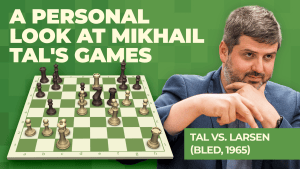
Tal vs. Larsen (Bled, 1965)
A famous game from the Bled Candidates semi-final match. The tenth and decisive game from their match which was tied at 4.5 a piece. A classic game in which Tal attacks on the white side of a Keres Attack, also known...

A famous game from the Bled Candidates semi-final match. The tenth and decisive game from their match which was tied at 4.5 a piece. A classic game in which Tal attacks on the white side of a Keres Attack, also known...
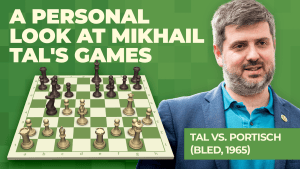
Game 2 of their candidates match. Game 1 had been a draw, but Tal had the better of it. In this game, Tal was surprised by the Caro-Kann Defense (Two Knights Attack [B10]). Portisch tried to play quietly and simplify...
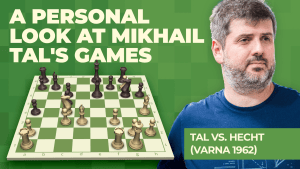
Mikhail Tal's win in the 1962 Olympiad in Varna, Bulgaria over the German Hans-Joachim Hecht. A Nimzo-Indian Defense. "It begins looking as if what is happening on the board absolutely has to happen. There is no way...

Two games from early in Mikhail Tal's career: Bukhuti Gurgenidze vs. Tal (Moscow, 1957) Benoni Defense: Classical Variation, Czerniak Defense (A78) Tal vs. Alexander Tolush (Leningrad, 1956) Sicilian Defense: Najdor...
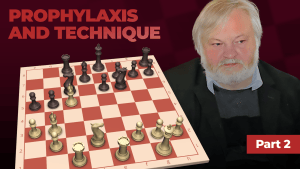
Two more examples: Yusupov-Magem, Barcelona 2010 and Hort-Kuzmin, BRD 1981. We hope you learned something!
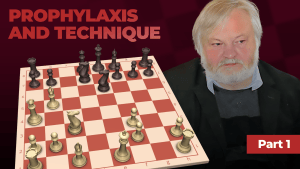
Even in an endgame, prophylactic thinking can be used to keep and increase an advantage. The stem game is Yusupov-Timoshenko, USSR 1982.
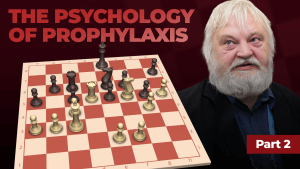
More damage done by prophylaxis, with the examples: Petrosian-Bannik, Riga 1958 and Yusupov-Hickl, Nussloch 1996.
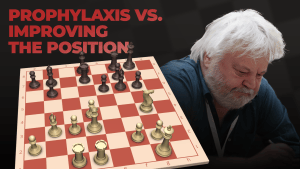
Artur shows why prophylaxis is superior to just improving your position without impeding your opponent's ideas.
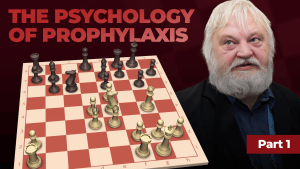
Artur explains the effect it can have on an opponent when his or her ideas are constantly prevented. The model game is Yusupov-Van der Wiel, Lucerne 1982.
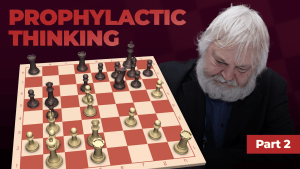
Time to rack our brains! The examples used are: Simagin-Abramson, USSR 1960, Yusupov-Timman, Linares 1992 and Yusupov-Luther, Essen 2002

We start to learn about the concept of preventing our opponent's plans while improving our own position by looking at the game Yusupov-Gavrikov, Zurich 1994
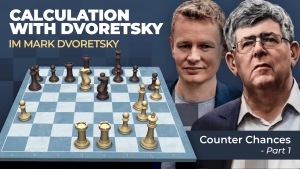
Mark reminds us of one critical aspect of calculation - we are not alone on the chessboard! It's crucial to not only look for your own ideas, but to find ideas for your opponents as well.
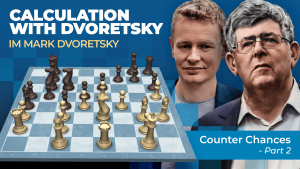
We keep training our awareness of counter chances with a longer excerpt from the game Inarkiev-Vitiugov and a few more exercises.
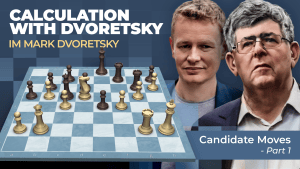
Calculating would be much easier if we knew what candidate moves to calculate. But how do we find those? Mark has a modern take on an old topic and a lot of great examples with which to train us.

The old candidate moves technique still deserves a place in modern chess. Mark Dvoretsky shows us some more examples and gives us some more brain teasers.
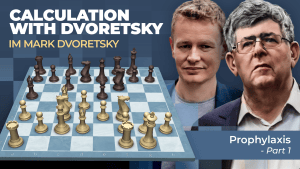
Prophylaxis is another important tool for finding the best move in a position. Mark shows us some examples that illustrate why.

Feel like you need some more practice with that prophylaxis idea? We've got you covered!
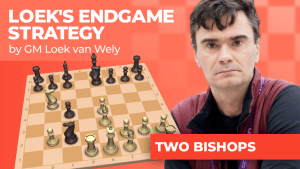
What's so good about the bishop pair? In this final video Loek explains all while talking about his win over Hrvoje Stevic in the 2017 French Team Championship.
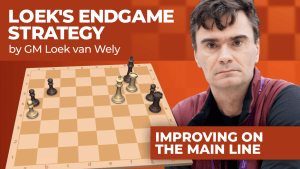
The most obvious line is not always the best. Find out how to look for points where we can refine our main line once we've seen it.
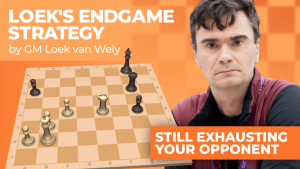
As you can see, exhausting your opponent is an almost inexhaustible topic.
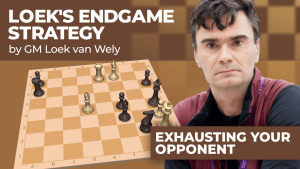
Hope you guys aren't exhausted yet, unlike some of Loek's opponents.
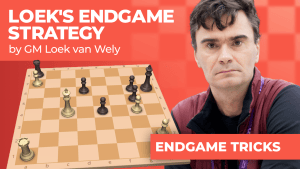
A sharp eye for tactics is very useful in the final stage of the game as well!
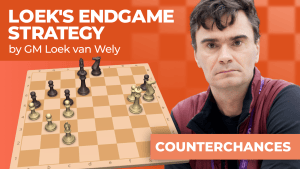
Never give up, never surrender! Loek teaches us to look for opportunities to fight back, taking as one of his examples how Anish Giri rescued a draw against him in Wijk aan Zee in 2012.
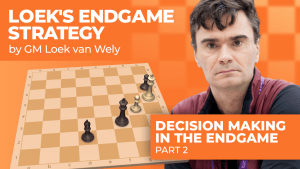
In Part 2 of his thoughts on decision-making in the endgame, Loek shows us more examples from different endgames.

Grandmaster Loek van Wely uses examples from his own career to show us how to take better decisions in the final stage of the game.